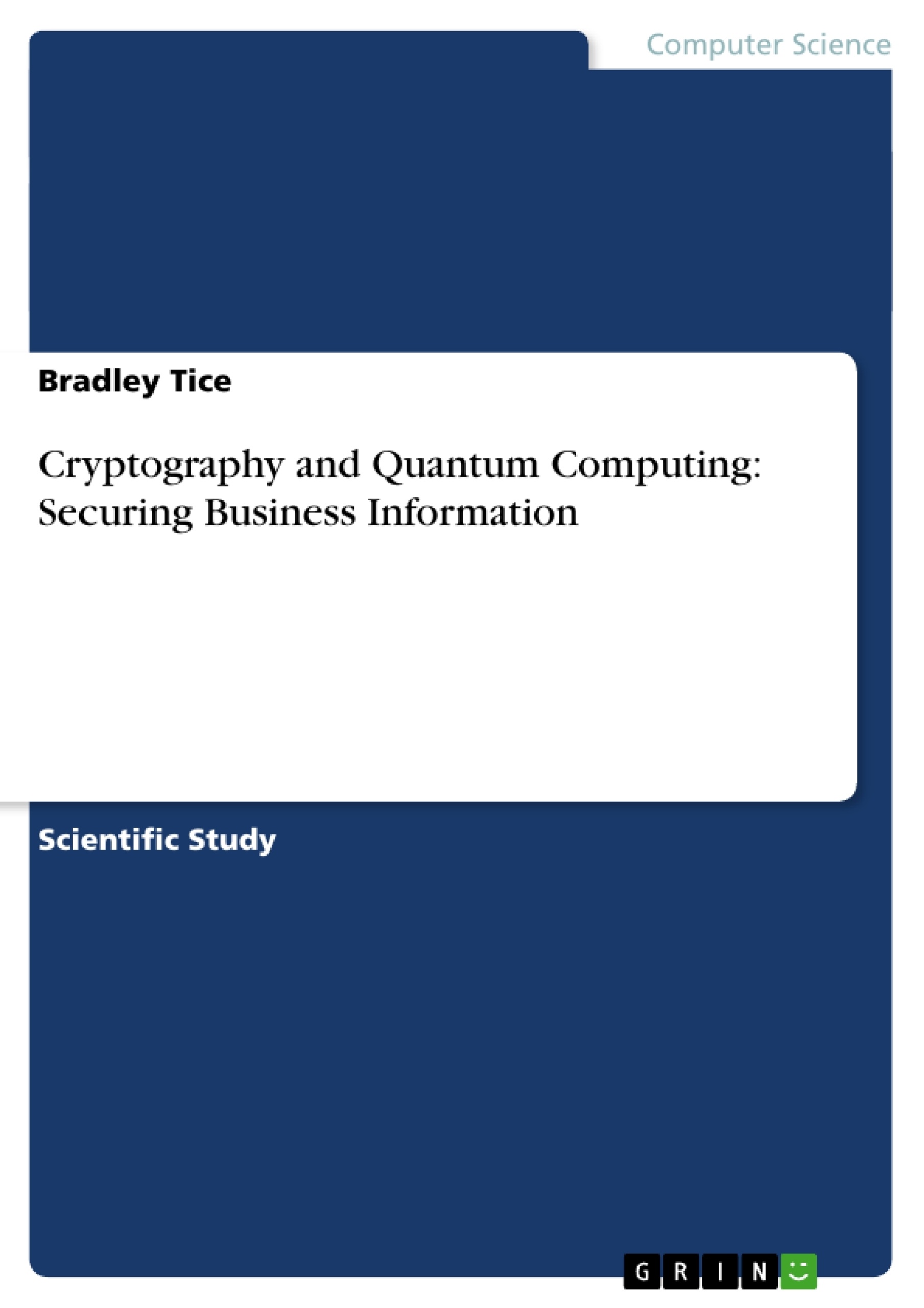The dissertation will examine the nature of quantum computing and quantum cryptography for the private sector as it relates to the use of 'secure storage and transmission' of business information.
The Table of Contents
Abstract
Preface
Introduction
The Review of Literature
Quantum Computing
Cryptography and the Quantum Gate
Cryptography and the Qutrit
Conclusion
Summary
Notes
References
About The Author
Introduction
The dissertation will examine the use of cryptography and quantum computing to secure business information for storage and transmission. The start of modern machine coding for business came after World War One by the way of a German electrical engineer named Arthur Scherbius (Kahn, 1991: 31). Scherbius took advantage of Germany’s vast Post-War publication of both private and public commercial codes for business (Kahn, 1991: 35).
Originally designed to save on ‘telegraph calls’ these secret codes did have a measure of privacy in transmission (Kahn, 1991: 35). What made Scherbius’ electrical ‘encipher’ machine special was the ‘rotating’ code wheels that could be interchanged to add to the length of the coded message (Kahn, 1991: 32-33). These commercial coding machines became the proto-types for the Naval and Army ‘Enigma’ coding machines of World War Two (Kahn, 1991: 43).
The need for secret, or private, correspondence in the field of business is never more important to day as it was in the early 20th century. With the coming advent of practical quantum computers, the use of ‘quantum information’ is a viable vehicle for coded messages of the future.
This dissertation will examine quantum computing and the growing field of cryptography in quantum computing. The focus of the monograph is in the use of cryptography in quantum computing for secure business information storage and transmission. This will be done by the examination of various Pauli gate matrix’s and the three state qutrit. The methodology to be used in the repetition of specific qubit and qutrit matrix’s and provide a secure transmission cell of extensive duplication and redundancy within the coded message.
The Review of Literature
The literature used for this dissertation is concise. The Wikipedia encyclopedia entries are foundational for the examples that are used in forming the quantum cryptography codes and is based on legitimate scholarly references as found on the site (Wikipedia, 2012a and 2012b).
Kahn (1991) is an excellent source for the history of World War Two coding information as well as a general history of secret codes as found in his The Codebreakers: The Story of Secret Writing (New York: MacMillan, 1967). Shannon and Weaver’s monograph (1949) details Shannon’s interest in cryptography and statistical communication theory (Shannon and Weaver, 1949).
The author’s unpublished manuscript An Abstract on the Theory and Application for a Universal Archetype Computer contains the first work by the author on quantum computers and cryptography and is the source of the examples given in this dissertation (Tice, 2012).
Pfeifer (2007) is used for the description of quantum computing and Schneier (1996) and Meyer and Matyas (1982) examine rates of entropy in meaningful messages. Patterson (1987) describes the ‘Playfair’ square cipher and Singh (1999) examines the historical context to that cipher.
Quantum Computing
Quantum computing uses atomic particles that function as time sensitive locations, per atom, for computations (Pfeifer, 2007: 676). The field of quantum computing was founded by Richard Feynman in 1982 (Wikipedia, 2012c: 1). The use of qubits, instead of classical computing’s bits, in quantum computers represents (n) qubits in an arbitrary superposition of up to 2(n) different states simultaneously and operates by setting the qubits into an initial state that is controlled and maintained by a fixed sequence of quantum logic gates (Wikipedia, 2012c, 2). The qubits follow only a ‘probabilistic’ superposition of states that is measured at one point only and not the actual superposition states before and after the measurement (Wikipedia, 2012c, 2).
[...]
- Quote paper
- Professor Bradley Tice (Author), 2004, Cryptography and Quantum Computing: Securing Business Information, Munich, GRIN Verlag, https://www.grin.com/document/205473
-

-

-

-
Upload your own papers! Earn money and win an iPhone X. -

-
Upload your own papers! Earn money and win an iPhone X. -

-
Upload your own papers! Earn money and win an iPhone X. -

-
Upload your own papers! Earn money and win an iPhone X. -

-
Upload your own papers! Earn money and win an iPhone X. -

-
Upload your own papers! Earn money and win an iPhone X.

